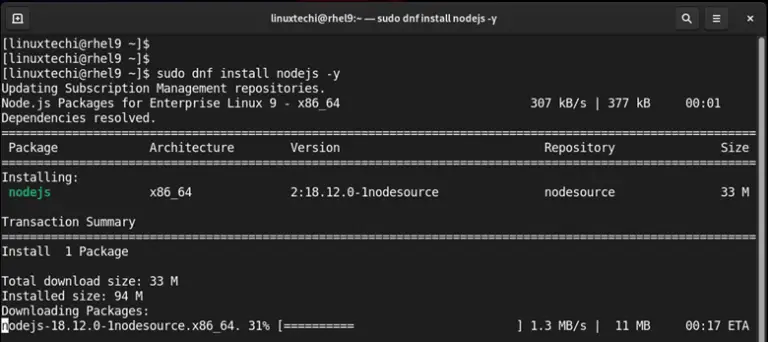


Note2: Remember that the code is in the /opt/nodejs directory ( WorkingDirectory=/opt/nodejs) and start with the main.js script ( ExecStart=/bin/node main.js).Ĭreate the /etc/default/nodejs environment file and paste the following line into: NODE_ENV=production Note1: According to this article, the NodeJS process when stopped exits with the code 143 when the default signal handler hasn’t been overriden ( SuccessExitStatus=143). Note: The -r option normally adds system user & group with uid/ gid<1000 and doesn’t create any home directory.Ĭonfigure the permissions: # chown -R nodejs:nodejs /opt/nodejsĬreate the /etc/systemd/system/rvice unit file and paste the following lines into: In this tutorial, it will be assumed that the JavaScript code is located in the /opt/nodejs directory and start with the main.js script.Ĭreate the nodejs user & group: # adduser -r nodejs To get a real service, you will need to put together the node engine, your Javascript code and a unit file. NodeJS is not a service by itself: it’s an engine.Īlso, there is no unit file after the installation, you only get the node engine binary ( /usr/bin/node) and the npm JavaScript tool ( /usr/bin/npm) used to install additional JavaScript libraries.

The title of this tutorial is slightly misleading. To install the NodeJS software, type: # yum install -y nodejs To install the EPEL repository, type: # yum install -y epel-release Here, only the binary installation will be presented. There are several ways to install NodeJS (see the Digital Ocean tutorial in the links below). Node.js‘ package ecosystem, npm, is the largest ecosystem of open source libraries in the world (source NodeJS website). Node.js uses an event-driven, non-blocking I/O model that makes it lightweight and efficient. Node.js® is a JavaScript runtime built on Chrome’s V8 JavaScript engine.


 0 kommentar(er)
0 kommentar(er)
